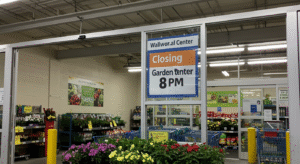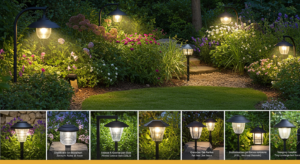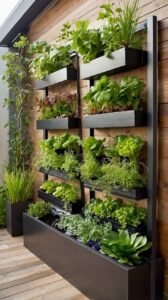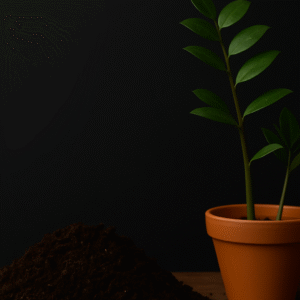What Is Outdoor Garden

outdoor garden
Gardening is one of the oldest and most fulfilling hobbies available to people. For centuries, it has been carried out to cultivate food, foster art, and even bond with Mother Nature. Outdoor gardening is one form where people can grow crops in an expansive space with direct exposure to sunlight and wind. It doesn’t matter if it is a small backyard vegetable patch, a front yard, or even a community garden; nurturing plants always brings joy and healing.
With the continuously changing pace of life, outdoor gardening is more valuable than before. People love the well-being obtained through gardening while growing to become more eco-friendly. But what exactly is an outdoor garden, what distinguishes it from indoor gardening, and why begin an outdoor garden? In this article, we will walk you through the steps needed to set up your personal green space, along with the rest of the essential details on outdoor gardening, its benefits, types, key elements, and more.
Defining Outdoor Gardening
Outdoor gardening, a practice that incorporates cultivating plants, flowers, herbs, vegetables, and trees within a setting open to natural conditions like sunlight, wind, and rain, is a testament to our responsibility towards the environment. It differs from indoor gardening, which is done in a controlled environment. Outdoor gardening, by contrast, depends on the ecosystem to assist in plant growth. From a scope perspective, outdoor gardening is done at different levels. It can be at a personal level where one sets home gardens in their backyard, balcony, or terrace.
It can also be uzwwraui, where a group of people share gardening spaces and responsibilities, otherwise called community gardens. Urban gardening, with the introduction of rooftop gardens and public green spaces, seeks to incorporate nature back into cities. Regardless of the scale, outdoor gardening is vital for increasing biodiversity, enhancing efforts for eco-friendliness, and providing calmness for those who undertake these activities.
Varieties of Outdoor Gardens
Each type of outdoor garden serves different aesthetics and purposes. The climate, space, and preferences of the person dictate outdoor garden. Flower gardens are widespread and adorned with plants like wildflowers and tulips. These gardens are vibrant and attract numerous pollinators. A vegetable garden offers the opportunity to grow organic vegetables such as tomatoes, carrots, and peppers, making them a fantastic choice for those who want to cultivate their food.
These gardens can be large or small, ranging from raised beds to backyard plots. Basil, mint, and rosemary are quickly grown for herbal and medicinal uses, making herb gardens a great choice. Ornamental landscapes are outdoor gardens focusing on aesthetics and relaxation, featuring shrubs and trees alongside decorative pieces like fountains or sculptures. Rock gardens use drought-resistant plants and stones to make these low-maintenance, visually appealing structures. All gardeners have different lifestyles and goals; each one is bound to find at least one type of garden that meets their needs.
Advantages of Outdoor Gardening
Outdoor gardening is a hobby that brings a variety of benefits to people and the ecosystem. One of the benefits is the improvement in mental and physical health. Gardening can be considered a low-impact exercise that enhances flexibility, strength, cardiovascular health, and well-being. Looking after the plants also reduces stress, anxiety, and depression. Hence, gardening offers a range of therapeutic benefits.
From an environmental perspective, outdoor gardens enhance biodiversity by supporting small beneficial insects, birds, and wildlife. They also help improve the air quality by taking in carbon dioxide and producing oxygen. Furthermore, plants help control temperature and reduce the urban heat island effect in cities. In economic terms, gardening is cost-effective as it reduces grocery bills. One can grow fresh and organic fruits, vegetables, and herbs, eliminating the hassle of purchasing them from stores. Additionally, outdoor gardening cultivates self-reliance and promotes a greater awareness of the food that you consume.
Essential Features of an Outdoor Garden
Several factors must be considered to achieve optimal results for an outdoor garden. Their order does not matter, but soil will always come first. It is the prerequisite for vegetation and sets the initial framework. Knowing if the soil is sandy, clay, or loamy will help make a soil fertility plan and designed soil interventions. For sub-standard soils, composting with organic materials can significantly improve quality and ensure that plants are healthy. Other important factors, like the amount of sunlight a plant needs, must be considered. Different plants require varying amounts of light to thrive. Tomatoes and peppers perform best in full sun, while ferns and leafy greens do well in partial shade. Analyzing other factors, such as sunlight exposure in your garden area, can go a long way in securing the right plants for the environment.
Correct plant care is another dimension of professional gardening. From time to time, dependable moisture amounts must be given. Plants can suffer from overwatering and rotting roots, as can underwatering and stunted growth. Proper irrigation ought to be established through drip irrigation, collection of rainwater, watering cans, or spoons. All of these tools could help guarantee that plants have the appropriate levels of hydration. To stop fungal diseases that can hinder the proper growth of a plant, good air circulation must be allowed. Leaving spaces between the plants eliminates congestion and promotes circulation, which can help reduce mold and mildew. Regular weeding, pruning, and fertilizing are also essential for maintaining a healthy outdoor garden.n
How to Start an Outdoor Garden
Starting an outdoor garden can feel like a chore, but with guidance, it can turn into a rewarding project. The first task is choosing a location that is sunny and has good soil and water access; on top of those factors, the plot should also be easy to access. Preparing the soil by getting rid of weeds, breaking the soil, and putting in some compost will prepare the soil for planting. The next step is selecting the plants aligned with the climate and from your personal plant list. For inexperienced gardeners, it’s best to start with marigolds, lettuce, and basil, which, while easy to grow, are also handy in the kitchen. However, it’s important to be aware of potential challenges such as pest infestations, extreme weather conditions, and plant diseases, and to be prepared to address these issues as they arise.

Following the correct mulching or sowing techniques is very important. Following watering schedules and optimal depth are the foundation for growing vigorous plants. Sowing seeds also helps in easier moisture retention and reducing weeds, which offers easy maintenance later in the year. Weeds can also be handled through regular maintenance work like fertilizing, pest control, and, most importantly, watering the plants. At the most basic level, gardeners should oversee the plants for any noticeable warning signs so that some gardening procedures can be skipped. Expanding the garden offers the ability to use various plants and advanced gardening techniques like raised beds or vertical garden structures.
Gardening Practices of Sustainability & Eco-friendliness
Sustainable gardening practices can help the garden’s health and the surrounding environment. To cut down on waste sent to landfills, compost leftover food from the kitchen, and trim the yard. Conserving water by employing drip irrigation and rain barrels helps reduce water use. Organic gardening techniques, such as forgoing synthetic pesticides and instead using natural pest repellents, such as companion planting, promote a healthier environment. Crop rotation and planting native plants can enrich soil quality and local wildlife habitats. Eco-friendly practices assist in building a better world and, at the same time, give the gardener the benefits of a flourishing garden.
Conclusion
The practice of outdoor gardening is incredibly beneficial to individuals, communities, and the environment. Growing flowers, vegetables, or herbs gives one a sense of achievement, deepens one’s connection with nature, and allows one to appreciate its beauty. To start with outdoor gardening, you don’t need any prior knowledge. All that is needed is patience, a willingness to learn, and curiosity. By learning basic gardening skills, knowing which plants to choose, and practicing sustainability, anyone can enhance the aesthetics of their outdoor space. So, if you have meant to start a garden, now would be a great time to plant seeds and enjoy outdoor gardening.





